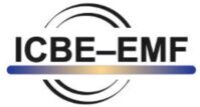International Commission on the Biological Effects of Electromagnetic Fields Chairman’s 2024 Annual Report Overview Statement
Ronald L. Melnick PhD., ICBE-EMF Chairperson
Signal boost needed to amplify our message.
During the past year ICBE-EMF has encountered numerous challenges to our goal of ensuring the protection of humans and other species from harmful effects of non-ionizing radiation. These challenges will continue until public health agencies act to develop scientifically based exposure standards that are truly protective of human health and the environment. In our first year of existence, we published two important papers in peer-reviewed journals. The first paper totally discredited the exposure limits to radiofrequency radiation (RFR) established by the FCC and ICNIRP due to their reliance on numerous and invalid assumptions of safety, while the second paper described several low-cost solutions to reduce emissions of RFR from mobile phones.
Unfortunately, these papers have not had our expected impact on consumer use of wireless communication devices, on governmental review of emission standards, or industry implementing technologies that are available now to reduce emissions to users of wireless devices. The problem stems from many factors, including misinformation produced by the wireless industry and its financed associates, and reluctance of regulatory and public health agencies to acknowledge and address potential health risks of popular wireless products. These barriers need to be overcome – but how? Unfortunately, in several countries, and especially in the US, government regulatory agencies are slow to respond unless they are prompted by legal action. However, as a scientific organization litigation is not an option for ICBE-EMF. Other approaches that could be effective include obtaining greater media coverage of the issues and direct application to federal public health agencies.
Global framework for the protection on Health & Environment against Non-Ionizing Electromagnetic Radiation (NIER).
Although these papers have been cited frequently in the scientific literature, they have not had our expected impact on consumer use of wireless communication devices, on governmental reviews of emission standards, or industry implementing technologies that are available now to reduce emissions to users of wireless devices. The problem stems from many factors, including misinformation produced by the wireless industry and its financed associates, and reluctance of regulatory and public health agencies to acknowledge and address potential health risks of popular wireless products. These barriers need to be overcome. As we develop a new framework for protecting human health and the environment from harmful effects of RFR, we will need to create a strategy to engage and educate the media, public health and regulatory agencies that have interest and authority over the health and environmental safety of RFR, and public health organizations (e.g., American Public Health Association) on the importance and implications of our work with respect to human health and the environment.
A major activity for ICBE-EMF has been (and will continue to be) to respond to published studies and reviews that erroneously conclude that exposure to RFR is safe for humans based on inadequate data and flawed methodologies and analyses. Two examples are the cohort study on mobile phone use and brain tumor risk (Feychting et al., 2024) and one of the WHO-sponsored systematic reviews on potential health effects of exposure to RF-EMF (Roosli et al., 2024) for which draft critiques have been written and are ready for submission to appropriate scientific journals (Moskowitz et al.; Frank et al.). Based on the few systematic reviews and meta-analyses that have been published to-date, it appears that in spite of limited data, the participants in these reviews have opted for a misleading conclusion of no evidence of an adverse effect at current exposure limits (implying no effect) even when the data are insufficient to distinguish adverse effects from no effects. Because we are the most capable scientific organization that can counter the dissemination of such misinformation, we must continue to assess the soundness of those publications and the author’s conclusions.
Pursuing Science that Enlightens and Propels Us Forward
The ICBE-EMF budget has a limited amount of funds available for special projects initiated by our members, this includes seed money for monitoring EMF exposures, experimental studies or travel for presentations at major conferences. However, only a small number of members have so far taken advantage of this opportunity. ICBE-EMF is committed to supporting the recognition of electromagnetic hypersensitivity (EHS) as a disabling/debilitating condition; with this objective in mind, ICBE-EMF is planning to provide financial support for a project that involves characterizing EHS and developing screening and diagnostic tools for this condition. There are still many areas that members can make important contributions including research and/or identification of research needs on topics such as risk to children’s health, neurological effects, and mechanisms of RFR-induced effects.
While responding to flawed systematic reviews and meta-analyses sponsored by the World Health Organization and promoting the importance of understanding and characterizing conditions such as EHS and other neurological effects present significant challenges for us to achieve our goal of protecting human health and the environment, I strongly believe the expertise among members of ICBE-EMF provides the capability to meet these demands and set the record straight on these important issues.
